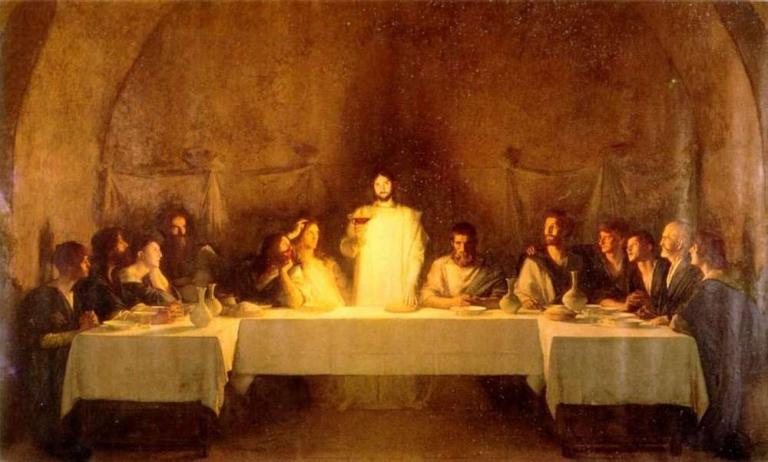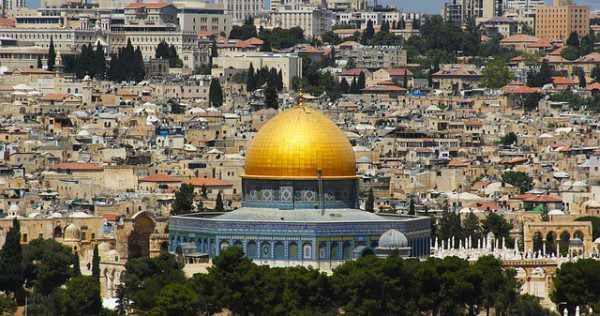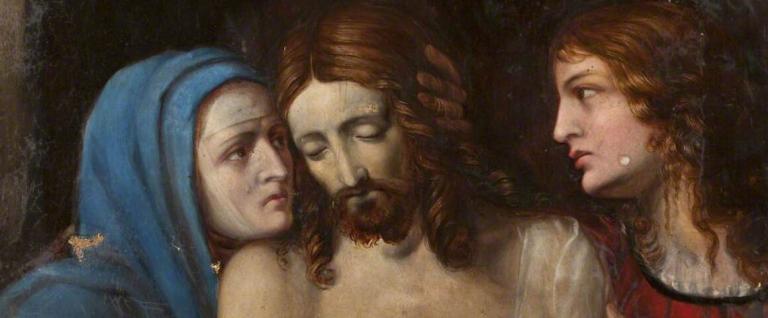Mark Graham and I are leading a 12-day tour of Israel and Jordan.
The dates are Dec. 30 – Jan. 10. That’s right– December 2013-Jan. 2014.
Cost: $4400 (all taxes, fees, 2 meals a day, airfare and bus from Roanoke, and tips included).
If you are interested, please contact me immediately ([email protected])–before spots fill up.
Here is the itinerary:
Israel-Jordan 2013
Itinerary
June 11, 2013
Dec 30 – depart on bus from church parking lot to Dulles or Charlotte
Dec 31 – fly, arrive in evening, stay in hotel outside of Tel Aviv.
Jan 1 – Caesarea – the magnificent Mediterranean port built by Herod, with its reconstructed ruins of a 4000-seat theater, hippodrome in which Christians were probably tortured and killed, and the prison where the apostle Paul was held for two years before his journey by ship to Rome. The great early theologian Origen was also tortured here.
Mt Carmel – the site of Elijah’s contest with 450 prophets of Baal. Elijah was intimately associated with the messiah, both as forerunner and prototype. This mountain overlooks the plain of Megiddo, where the biblical battle of Armageddon is said to take place.
Sepphoris – the cosmopolitan city just 4 miles from Nazareth, where Joseph and Jesus probably worked as stone masons. The cardo or main street has been unearthed, which means these are the very stones Jesus and Joseph probably walked on.
Hotel-kibbutz on Sea of Galilee
Jan 2 – Nazareth
Church of the Annunciation – the magnificent Catholic church that dominates this city, now the largest Arab city in all Israel and the largest in the Galilee. Its beautiful mosaics of the Virgin and child are from all over the world. Its courtyard contains the foundations of houses from the first century, perhaps that of Joseph and Mary.
Nazareth Village – constructed by Arab Christians, this is a farm that was a first-century farm, with houses and mill and synagogue rebuilt as they were 2000 years ago. Replete with sheep and goats and re-enactors who show you how they spin wool and cloth and make food. The synagogue is the only complete first-century synagogue reconstruction in all Israel.
If time—Nazareth market – today’s Arab market with nearly everything one could think of to buy—from wood-carvings to CDs.
Caesarea Philippi – the site in northern Israel, near Syria, where Peter first affirmed Jesus as messiah, and Jesus proclaimed, at the mouth of a cave known by pagans as containing the Gates of Hell, that they would not prevail against the Church.
Cliffs of Arbel – breathtaking overview of the Sea of Galilee and the Golan Heights.
Hotel on Sea of Galilee
Jan 3 – Boat ride – on the Sea of Galilee, with views of the Decapolis in modern Jordan, where Jesus ministered, and Gerasa, where Jesus freed the demoniac.
Jesus boat – spectacular remains of, and video about, a first-century fishing boat found under the mud near the shore of this Sea.
Capernaum – the headquarters of Jesus’ three-year ministry. 4th-century synagogue built on top of earlier (1st-century?) synagogue. “Moses’ seat” (Matt 23.2) was found here. Beautiful modern church built over what might have been a (Peter’s?) first-century house-church,
Mt of Beatitudes – the probable site of the Sermon on the Mount.
Peter Primacy – the site on the shore of the Sea of Galilee where the resurrected Jesus had breakfast with Peter and other disciples (John 21).
Drive to Jerusalem, stopping at Mt of Olives on way in.
Hotel Gloria or Knights’ Palace.
Jan 4 – Bethlehem – the fourth-century church, built by Constantine and his mother, marking the site of Jesus’ birth. Charming Arab town just inside the West Bank, where Jerome translated the Bible into Latin (Vulgate).
Shepherds’ field – outside Bethlehem, very much like that of those shepherds to whom the angels first appeared.
Israel Museum – spectacular collection of remains from more than 3000 years of history. A fascinating 1:50 model of Jerusalem in the time of Jesus.
Free time
Jan 5 – (Sunday)
9:30 service at Christ Church – the oldest Protestant church in the Middle East. Its liturgy is a mix of Jewish and Anglican.
Gethsemane – the garden where Jesus sweated tears of blood. Its olive trees probably grew from shoots obtained from the very trees Jesus prayed among. Its Church of All Nations is one of the most beautiful in all the world.
Via Dolorosa – we will walk the “sorrowful way” of Jesus while carrying his cross.
Davidson exhibit – movie about what the first-century Temple was like.
Southern steps of temple – the actual steps Jesus climbed as he went into the Temple daily to teach.
Western Wall – the wall of the Temple Mount where Jews come from all over the world to pray, because it is close to the Holy of Holies.
Church of the Resurrection – also known as the Church of the Holy Sepulchar, which encompasses, amazingly, what historians consider to be the sites of both Calvary and Jesus’ tomb.
Jan 6 – Ahava/Dead Sea – we will visit a store of the world-renowned cosmetics company that draws from the minerals and mud of the Dead Sea. Then we will swim at the lowest point on planet earth, 1200 feet below sea level, in the sea which will keep you on the surface no matter how hard you try to sink.
Qumran – the legendary community that stored the Dead Sea scrolls in caves.
Masada – Herod’s phenomenal summer retreat and fortress on top of an aircraft-carrier-shaped mountain by the Dead Sea, on which nearly 1000 Jews held out against the Romans from 70 to 73 AD, finally committing mass-suicide.
Jan 7 – Cross border at Allenby Bridge
Bethany beyond Jordan baptismal site – the most likely site of Jesus’ baptism by John.
Mt Nebo – the spot from which Moses was given a view of the Promised Land before he died or was taken directly to heaven (the Hebrew is obscure). 2400 feet above sea level, on a clear day one can see the Judean hills, Jerusalem, and the Dead Sea.
Medeba – in biblical times many battles were fought here; magnificent mosaics and fragments from the early Christian period were found here, including a 6th-cent. mosaic floor composed of 2.3 million tiles naming 150 sites!
Hotel at Petra
Jan 8 – Petra – thought to be the biblical Sela, capitol of Edom. Listed by The Smithsonian as one of the “28 places to see before you die.” Tradition says this is where Moses struck a rock and drew water (Ex 17). This “rose city” carved out of red rock by the Nabateans, inhabited by early Christians, is dazzling and unforgettable. Those who are able can take a 1.5-3.0 hour hike to Ed Deir, ‘the monastery,” an imposing temple carved out of rock, and “the high place,” from which there is a stunning view of ancient Moab and parts of Israel.
Hotel in Amman
Jan 9 – Jerash – also known as the city (as opposed to the region) of Gerasa, it has some of the best preserved Roman ruins in the Middle East.
Citadel in Amman – the capitol of the land of the biblical Ammonites, also the southernmost city in the Decapolis, Amman is one of the earth’s oldest cities—7000 years of continuous habitation. This is the site where Jesus’ ancestor David sent Uriah the Hittite to his death in battle.
Jan 10 – fly home from Amman
RECOMMENDED READING (before we leave on Dec. 30):
Eugene Korn, The Jewish Connection to Israel, the Promised Land: A Brief Introduction for Christians http://www.amazon.com/Jewish-Connection-Israel-Promised-Land/dp/158023318X/ref=sr_1_3?s=books&ie=UTF8&qid=1370966212&sr=1-3&keywords=eugene+korn
Ann Spangler and Lois Tverberg, Sitting at the Feet of Rabbi Jesus: How the Jewishness of Jesus Can Transform Your Faith http://www.amazon.com/Sitting-Feet-Rabbi-Jesus-Jewishness/dp/0310284228/ref=sr_1_1?s=books&ie=UTF8&qid=1370966349&sr=1-1&keywords=sitting+at+the+feet+of+rabbi+jesus









